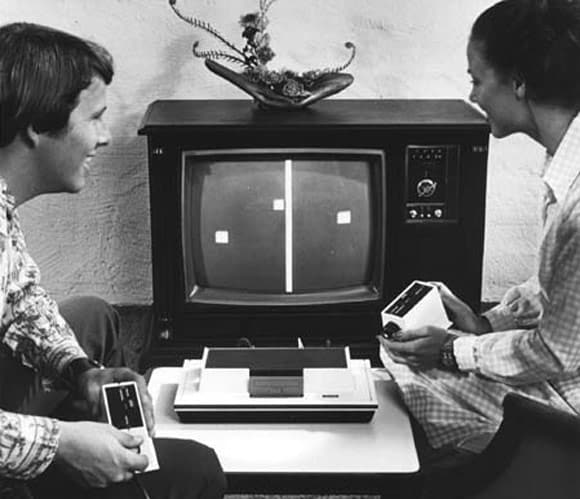-
Posts
832 -
Joined
-
Last visited
-
Days Won
2
Posts posted by Amberwolf
-
-
16 hours ago, Bajan Blue said:
I like this and agree with what Bjorn said.
Cool
Thanks!
Were you listening to the original version with a "beat" thru almost the entire thing,
https://amberwolf.bandcamp.com/track/gareki
or the alternate version that only has that in a few places?
https://amberwolf.bandcamp.com/track/gareki-ii-alternate-version-cinematic-feel
I don't have separate threads for them because I didn't want to pollute the forum after getting feedback on another one that i was posting too many versions and it was likely to keep me from getting feedback.
-
FWIW, the most common cause I've seen wiht anyintermittent issue is a connector or wire failure, in decades of fixing things of all kinds--if it's got wires in it, they're usually the cause.
usually at the contact itself--either the wire is not correclty crimped into it or it was crimped so hard it broke the conductiors at the back of the cotnatc, or the contact is spread so the open side doesn't fully mate with the pin side, or the side that's soldered to the board is not soldered correclty or at all.
Sometiems the wire is borken somewhere alontg the length, usually at the back of a connector or at the board connection point, or at the entrance / exit of whatever casing the wire pases thru. it's not usually a copmlete break, just the conductor inside, and the isnluation looks good but sometiems has some physical difference to working wire.s
-
There was a time when SCSI was the only way to get the speeds of both drive access / seek time and data transfer rates to/from the computer, but the last couple decades has seen that rapidly fade.
The decade-plus-old 1TB spinny-type SATA drive in my equal-age laptop works faster, far quieter, lower power, and around an eighth the physical size of the 100gb? (maybe it was only 10gb?) 10,000rpm SCSI spinny drive that a friend of mine spent a fortune on to get a video editing system able to actually stream the data realtime...which it could just barely do.
I don't know what modern SCSI drives can do, relative to the SSDs or even spinny SATA drives of today, but the one I have with the 16gb of ram I've got in the ancient laptop lets me use enough audio clips and audioloop tracks to do the stuff on my bandcamp site without problems in playback, while also sometiems recording more tracks with the mic or guitar.
Not sure if this article is helpful, but it has some comparisons and explantions that include scsi
-
8 hours ago, gmp said:
It’s like you have 100 cats and only one cat door. With midi 2.0 you have a barn door wide open.
Although you may have the same number of cat fights going thru either one...

/end OTness
-
2 hours ago, Byron Dickens said:
Keeping your expectations low makes them way easier to meet.
I usually have to keep mine below zero for that to happen.

-
That way you can sonify it like they do with some astronomical data?
-
I've used the trackview PRV for so long that I dont' recall if you can do this in the actual PRV, (EDIT: yes, you can) but if you are in track view and choose to view the midi track as PRV instead of clips, then you can hover over each note at the top edge toward the middle/right-ish end of it, and get a cursor that looks a little like a batery level icon. Click and drag there and it changes the velocity and shows you the vertical bar while it's happening.
If youw ant to also see all velocities at the same time youc an also turn that on in the same area where all the track controls are, on mine it is a button that looks a little like a series of velocity or controller vertical bars in a curve.
That control is also in the top left corner of PRV in my version.
-
i liked son of blob better....but that was at a drivein and the weather was nice, so i might be remembering more of the feelin of that than the movie

-
6 minutes ago, sjoens said:
I think you all misread my question...
No, no we didn't.

-
 1
1
-
-
At least you get "chicken" in your results.
 That doesn't always happen.
That doesn't always happen.  19 minutes ago, Jesse Screed said:
19 minutes ago, Jesse Screed said:For sure, for example, I ask how long and at what temperature to bake a chicken ..
Top 25 google search results read like this
1. What is a chicken.
2. Where do chickens come from.
3. Are chickens birds.
4. How many types of chickens are there.
.
.
.
16. Do voodoo doctors use chickens.
.
.
.
42. What is baking.
.
.
.
68. Bake in the preheated oven for 10 minutes. Flip chicken and cook until no longer pink in the center and the juices run clear, about 15 minutes more. An instant-read thermometer inserted into the center should read at least 165 degrees F.
.
.
.
78. Bake at 400F.
-
 1
1
-
-
36 minutes ago, Starship Krupa said:
The biggest issue I've run into when trying to find a way to control audio software with a game controller is that there seem to have been multiple ways to do it with hardware that the original PC game port spec. The Sidewinder was Microsoft's own line, right?
Yeah, the SW is by MS.
There are several ways that game controllers can work, for the original 15-pin dsub type. Some of the SW's had both digital and analog signals, so that the force-feedback could know what to do and when--the analog stuff has no way to get data from the PC to the GC, those analog pins are input only on the PC side. So it uses the serial data line that was in those connectors for MIDI port use.
Cheap gameports on the PCs may not even have the serial lines implemented, just the analog ins, so FF GCs don't work on them as they should. But the midi-joystick programs should.
USB stuff...well, that's all USB, so it just does whatever they chose to do over the USB cable and spec. Some use the standard "game controller" driver (kinda like the "class midi driver" or the "class usb driver" or whatever, so ther'es no specific driver from the GC maker. Some use a separate driver for advanced functions or programming the buttons, triggers, etc., calibrating it, and so on.
But for the purposes of using a GC to modulate MIDI fucntions, it doesn't really matter. The analog functions are all that matter to most of the conversion drivers/software, they dont' (none I've seen so far) provide any data out to the GC, so they dont' use FF or whatever on them to tell the user anything. So they don't use the MIDI / serial lines on the port. In fact most of the time you could use both an old 15-pin midi port adapter *and* a GC, by using a Y-splitter.
And these days, it's all USB anwyay.
36 minutes ago, Starship Krupa said:But I'm trying to use an XBox controller (and/or PlayStation controller).
As long as it's USB and uses the class driver it'll probably work fine with midi stuff. if it uses it's own dedicated river it depends on how they wrote it and what it presents to the program side.
36 minutes ago, Starship Krupa said:I also found a great rant from the MIDI Manufacturers Association about the pitfalls of using the common game port to MIDI port hack (and using computers for music in general):
yeah, that's a problem with various versions of the serial data lines hacked onto the gampeort 15pin type. i have several different "cable" type midid cables that plug into those, some by reveal, some by no-name, one by creative, etc. All of them appear to direclty ground the shield *and pin 2* of the din to the shell of the db15 and to the ground pins of the db15, which makes for excellent ground loop proglmes.

fwiw, the cheap usb midi cables do the same thing sometimes.
But some fo them, like the advanced gravis box-cable i have for the db15 does correctly optoisolate and wire and ground all the right bits, so it actualy works where it's supposed to without causing grief.
36 minutes ago, Starship Krupa said:" In fact, given the noisy fans and screaming disk drives that go into the PC, it is a wonder they can hear at all."
Thankfully we don't have to deal with that anymore, what with ssds and better cooling solutions, more efficient cpus, etc. in the 90s I remember spending weeks designing building and implementing the quietest computer system i could, taking out all fans, repalcint g with just one much much larger diamter much mcuh slower fan that moved the same air as all those others, but pulled it thru the cmputer from an external duct, with baffles and guides from the case air intakes to all the hot stuff. wWorked great for years; the next one that replaced it didn't need nearly as much of that, but i did the same thing there. nowaday i use an old laptop that is nearly silent even with the spnny type of hdd in it, evne when the fan ramps up cuz im' knockign the cpu with ltos of synths and plugs.
but i have a stakc of old hp server racks that sound like concorde on afterburners just truning on, and get louder from there...so i'll have to do the quieting on those to use them for much of anything (one for cad stuff / 3d printing / modelling, one for a daw, one for coding / behavioral ai on a robot project someday, etc).
36 minutes ago, Starship Krupa said:I'm sensing frustration there, MIDI Manufacturers Association. Sometimes when I feel frustrated I remember the serenity prayer, which helps me remember that I am powerless over other people's design decisions. 😄
i redesign stuff all the time to use it the way i need it to work, and have to work around shitty design decisions all the time. wish i could do that for software, but at least electrical and mecahncilal i can do, at least hwne my body and mind work well enough to manage it.

-
15 minutes ago, Starship Krupa said:
If you could post links to them, I'd most appreciate it. I switched to using controllers for gaming a year and change ago and at the time had the idea that it would be interesting to use one for DAW control, but never found a way to do it.
I don't have a link to a specific one; I am not certain which one I used back when I tried it out...might've been "joy to midi", was probably this one based on the UI appearance
https://www.fergonez.net/softwares/fjoymidi
I think I was using an old sidewinder that had analog 15pin on the actual cable, and came with an adatper from that to usb that iw as using on the system itself?
This google search finds several, some of which are hardware and some of which are software, and some are both.
https://www.google.com/search?q=joystick+for+MIDI
I think this one is probably more specific to using an exsting USB joystick as a MDII source
https://www.google.com/search?q=USB+Joystick+MIDI+Driver
but there appear to be less useful results in it.
Google used to be a lot better at finding the thing you actually asked, but for a while now it tries to "understand" what you ask and find things it thinks are a match...which doesn't work nearly as well as just literally ashowing the results you asked for.
 It doesn't even honor boolean or inclusive exclusive requests much of the time.
It doesn't even honor boolean or inclusive exclusive requests much of the time.
This one should be better
-
This one

-
 1
1
-
-
The only difference that might make a difference is that a really good USB3 cable is probably better shielded than old USB...but a really cheap USB3 is probalby not as good as a good old plain USB cable.

USB3 is meant for higher bandwidth, so it's probably better shielded internally, perhaps like firewire cables which had not only twisted pair for each data set, but shielding around each pair separating all the pair and the power all from each other.
-
Whether it's currently available or not, there *was* apparently a VST version at some point
http://forum.cakewalk.com/FindPost/1962543
-
Where is he trying to create the account?
-
You might be in luck; I found this in a quick google:
https://elektrotanya.com/yamaha_mg8-2fx.pdf/download.html#dl
it is actually the service manual, schematics and all, though it has no troubleshooting tips that help. too big to attach to the post though.
Power supply appears to be a split rail type like mine, so if you have a voltmeter, try measuring it to see if it's output is the same on both "sides" of the center rail. It's just transformer in the box, no dc stuff, so you'd set your meter on 20VAC and connect the black lead to the center pin, then measure to each of the side pins. they should both measure the same, around 18.5vac.
If they're not, you can probably fix it with a new adapter (PA-10). ***
If they both measure the same, and correct, then hte problem is inside the mixer itself.
*** (my mixer came from goodwill without an adapter, and a new one would've cost more than the mixer did, and a really cheap aliexpress-type "direct replacement" was not what it claimed :lol: and was so small that it ran so hot I thought it would catch fire...so I am actually using a split-rail *DC* supply from a Bose speaker system that I also got at goodwill for very cheap...but I don't recommend this type of workaround unless like me you are a hack that's willing to deal with possibly blowing up the mixer
 )
)
-
 2
2
-
-
Yeah, unfortunately automation editing has felt pretty primitive since it's original implementation, up to the old version I use (don't know what it's like nowadays, but apparently still missing "required" stuff for my purposes, based on threads like this one).
Pardon the probable OTness below; I'll remove it if it's not wanted in this thread. It's possible that some of the things below are different in newer versions.
I use a lot of it, and would use more if I could change a number of things about it's workflow and editing tools, as well as adding things like you're talking about.
Some things I want to do are easier to use MIDI CCs, then convert them to shapes. I wish I could then also copy or move them to audio tracks I want them on directly, but at least in my old version that's not an operation that works.
I'd love the option to copy/paste envelopes regardless of the source or destination type, and to have a "library" I could save shapes to, rather than having to constantly waste huge amounts of time redrawing the same things. It would be available to any project, as well as within that project in anywhere that automation can exist, regardless of original source or new destination.
Some things are not easily possible to even draw, much less edit, especially with some types of tempo-synced effect control "waveforms". For instance, if you want to have an automation waveform with a period greater than 1 measure, without manually drawing every part of a curve, etc., point by point, then copy/pasting that repeatedly.
Being unable to constrain values is also problematic (as it is when drawing MIDI CC data).
Even some of the tools that do work on automation are...difficult to work with. For instance, youc an select and nudge them around, but you must reselect the automation over and over again, as it is deselected upon every nudge.

(semi-OT: I used to do 3D modeling and animation in an ancient Lightwave3D version, and that used automation envelopes for a lot of things. It's tools were no better, and just as tedious to use...so I did as little of it as I could. It's been so long I don't recall for sure but I think it had some selection methods that were easier/better. I'm sure they've improved it since then, based on the images I get in a websearch just now, but without using it from then and a newer version I couldn't say for sure. )
-
If it works, it works.
 I guess the version youre using either deletes the unused synth automatically in those cases, or else they're still in the project (visible only in the synthrack)?
I guess the version youre using either deletes the unused synth automatically in those cases, or else they're still in the project (visible only in the synthrack)?
What I'm using is so old that's not a feature; it's not surprising that they would have eventually added it though. (in mine, the only thing that would remove them outside the synthrack is to undo the insertion, which would also undo all the things I did between the insertion and that moment, which would not usually be wanted).
Either way...based on other posts google finds about modern CbB, then unless I am completely confused (always possible) the synthrack does still exist, and could still be able to be used to remove synths (whether you're using them or not
 ).
).
-
And unfortunately while there is an option to convert MIDI to shapes (automation) there isn't a direct function to do the reverse (although I can think of a convoluted way to manage it, i don't know how well it would work).
-
1 hour ago, 57Gregy said:
Except the receiver, whose standby light is still flashing.
Hopefully nothing actually got damaged.

If your mixer is like mine (MG16?) , it has a dual-voltage-rail wall adapter, and if the negative rail goes down or is wrong, it could cause audio path problems while not keeping the whole thing from appearing to "work".
29 minutes ago, craigb said:It's obvious that you need to get a Soundblaster sound card. Simples! 😆
Like this one?
https://hackaday.com/2019/06/19/reverse-engineering-the-sound-blaster/
-
If nothing else, some of the GUI images are adorable:

-
On 1/30/2025 at 5:46 PM, Leander said:
but several saves later, Modo Bass is still shown in the list of loaded instruments.
Where do you see this list?
Synth rack has a list of loaded instruments, so, if that's where you see them, you could also remove them from there.

-
3 hours ago, Kurre said:
Maybe the audio produced by a plugin, which now are left there in the audio folder, has some link to the plugin name?
As they are not currently used they and their link would be gone.
The audio files don't have any links with what created them. They're just audio files.
All the "links" to things are inside the project file. To remove those, you have to remove the things themselves from the project.
For fx bin plugins, that means removing them from the fx bins in tracks and busses.
for synths, that means removing them from the synth rack.
(unless they were inserted as fx in bins, in which case they should be completely removed by removing them from the fx bins, even though they *also* show up in the synth rack they don't have to be removed from there).



Cakewalk Sonar Midi Arpegiator Questions, please help
in Cakewalk Sonar
Posted
Her'es a previous thread about this that mayhave other useful info